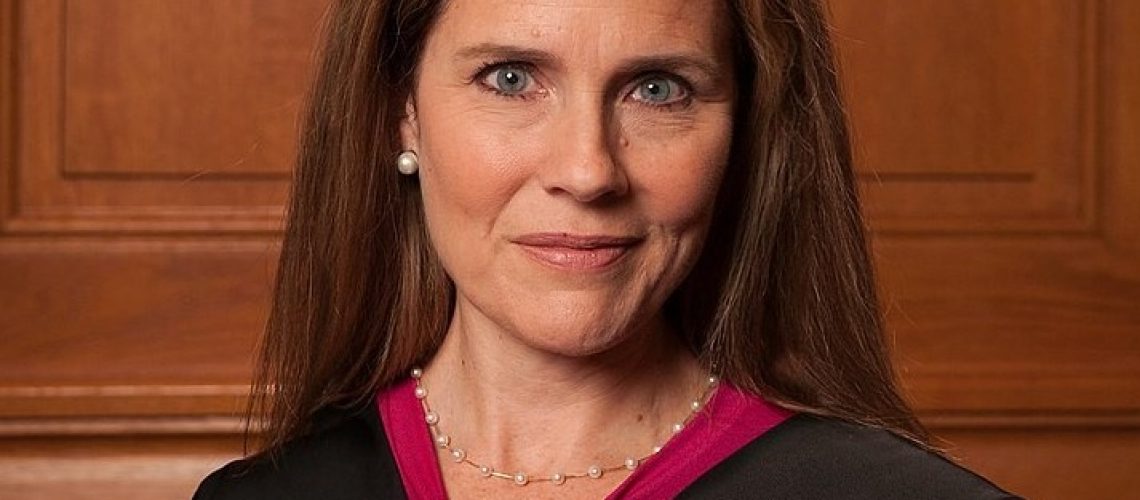Amy Barrett went on the Supreme Court with the blessing of originalists everywhere. Her academic writings as a Notre Dame professor and her judicial opinions from a few years on the Seventh Circuit all indicated she was firmly in the camp of those wedded to a textualist interpretation of the original documents as understood at the time of their generation. The widespread belief was that Chief Justice Roberts’ time at the pivot of the Court was over with five originalist or originalist-leaning justices on the bench (Thomas, Alito, Gorsuch, Kavanaugh, and Barrett).
So far, that scenario has not played out. Instead, Barrett has been content to ride in Roberts’ shadow this term.
That has been demonstrated in the two decisions this term of most import to religious freedom advocates. In Fulton v. Philadelphia, the Chief Justice wrote the majority opinion in favor of Catholic Social Services; he found that the city had improperly burdened CSS’s free exercise of religion when the city would not continue contracting with CSS to provide foster care services because CSS refused to place kids with those in same-sex marriages. Roberts crafted a decision that avoided overruling Employment Division v. Smith by distinguishing and narrowing it, but, frankly, in a way in which Smith itself on its facts should have been decided differently. Alito, Thomas, and Gorsuch would have overruled Smith. Instead of joining those three, Barrett joined the Roberts’ opinion and then wrote a short concurrence saying that, although Smith was probably wrong (with which Kavanaugh concurred), there were a lot of questions she has not yet thought through about what standard should apply if Smith is wiped off the books (with which Breyer and Kavanaugh concurred).
In Americans for Prosperity Foundation v. Becerra, the Chief Justice again wrote the lead opinion, this time in favor of charities resisting California’s requirement that they disclose all of their major donors to the state’s bureaucracy, finding it to be a facially unconstitutional burden on the right of association. Only Barrett and Kavanaugh joined his articulation of the proper standard of review, however, as he cobbled together from prior precedent a middle-ground standard of “exacting” scrutiny. That standard, he explained, is less than “strict” scrutiny, in that it does not require the state to act in the least restrictive means, but only to tailor its burden on association carefully to the perceived governmental interest. Of course, a “right of association” does not appear in the text of the First Amendment, while a “freedom of assembly,” not mentioned by Roberts, does. Thomas said he could not see why the right of assembly should have less protection than other First Amendment rights, and Alito, joined by Gorsuch, pointed out that the “exacting” scrutiny cases on which Roberts relied predated the “strict” scrutiny cases and likely were meant to articulate the same test, but that it was unnecessary to decide the issue, as the California requirement failed under either Roberts’ test or strict scrutiny.
What do Barrett’s votes in these cases indicate? Two answers suggest themselves. First, after the political brouhaha of her confirmation process and the not-so-veiled threat of increasing the size of the Court to lessen the influence of the conservative justices, she could just be taking a tack to appear as centrist as possible. At least for now, that means hewing to the Chief Justice’s often demonstrated propensity to distinguish prior cases artfully, rather than to overrule them. Second, it could be that she is not as much of an originalist in the Thomas and Scalia mold as previously assumed.
Time will tell, of course, and perhaps sooner than later. On the docket for next term is Dobbs v. Jackson Women’s Health Organization, a case involving Mississippi’s statute that outlaws abortion after 15 weeks. This puts Roe and Casey in the crosshairs, as the issue is whether their rule, as understood by the Fifth Circuit, allowing no restrictions on a woman’s “right” to abort prior to the unborn child’s viability outside the womb (at about 24 weeks) is itself viable. Barrett could side with the view that Thomas has espoused repeatedly and overrule Roe and Casey entirely. She could also take what could be classed as a more Roberts-esque approach, which could be (a) holding that viability under Roe was never a per se rule and Mississippi stated sufficient policy reasons and legislative findings to override it, (b) striking the viability standard and articulating another rule, or (c) striking the viability standard but leaving in place the “undue burden” test of Casey.
No decision will be watched with any more interest next term than Dobbs, including where Barrett lands. No case is more likely to show her true colors this early in her tenure on the high court.

